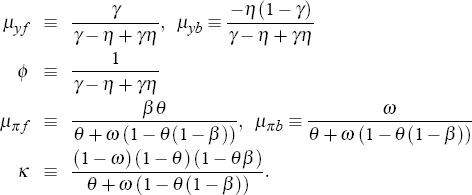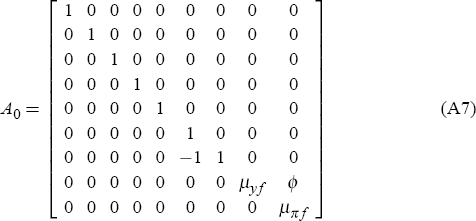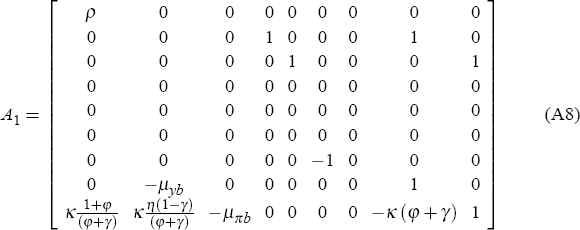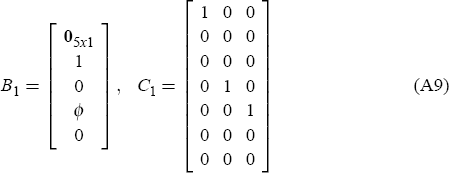RDP 2006-05: Optimal Monetary Policy with Real-time Signal Extraction from the Bond Market Appendix A: The Model
June 2006
- Download the Paper 223KB
The parameters of the linearised model
are given by
The model can be put in compact form
where the coefficient matrices A, B and C are given by
The likelihood function
To compute the likelihood of the model, we follow the method of Hansen and Sargent (2004).
Form a state space system of the AR(1) process of the state 
where  is the vector of variables that are observable (to us as
econometricians) and
is the vector of variables that are observable (to us as
econometricians) and  is the covariance matrix of the
econometric measurement errors on output and inflation. Construct the innovation series
is the covariance matrix of the
econometric measurement errors on output and inflation. Construct the innovation series  from the innovation representation
from the innovation representation
by rearranging to
where K is the Kalman gain matrix
The log likelihood  of observing the data Z for a given
set of parameters Θ can then be computed as
of observing the data Z for a given
set of parameters Θ can then be computed as
where
The posterior mode  is then given by
is then given by
where  denotes the log of the prior likelihood of the
parameters Θ. The posterior mode was found using Bill Goffe's simulated annealing
minimiser (available at <http://cook.rfe.org/>). The posterior standard errors was
calculated using Gary Koop's Random Walk Metropolis-Hastings distribution simulator (available at <http://www.wiley.co.uk/koopbayesian>).
denotes the log of the prior likelihood of the
parameters Θ. The posterior mode was found using Bill Goffe's simulated annealing
minimiser (available at <http://cook.rfe.org/>). The posterior standard errors was
calculated using Gary Koop's Random Walk Metropolis-Hastings distribution simulator (available at <http://www.wiley.co.uk/koopbayesian>).























